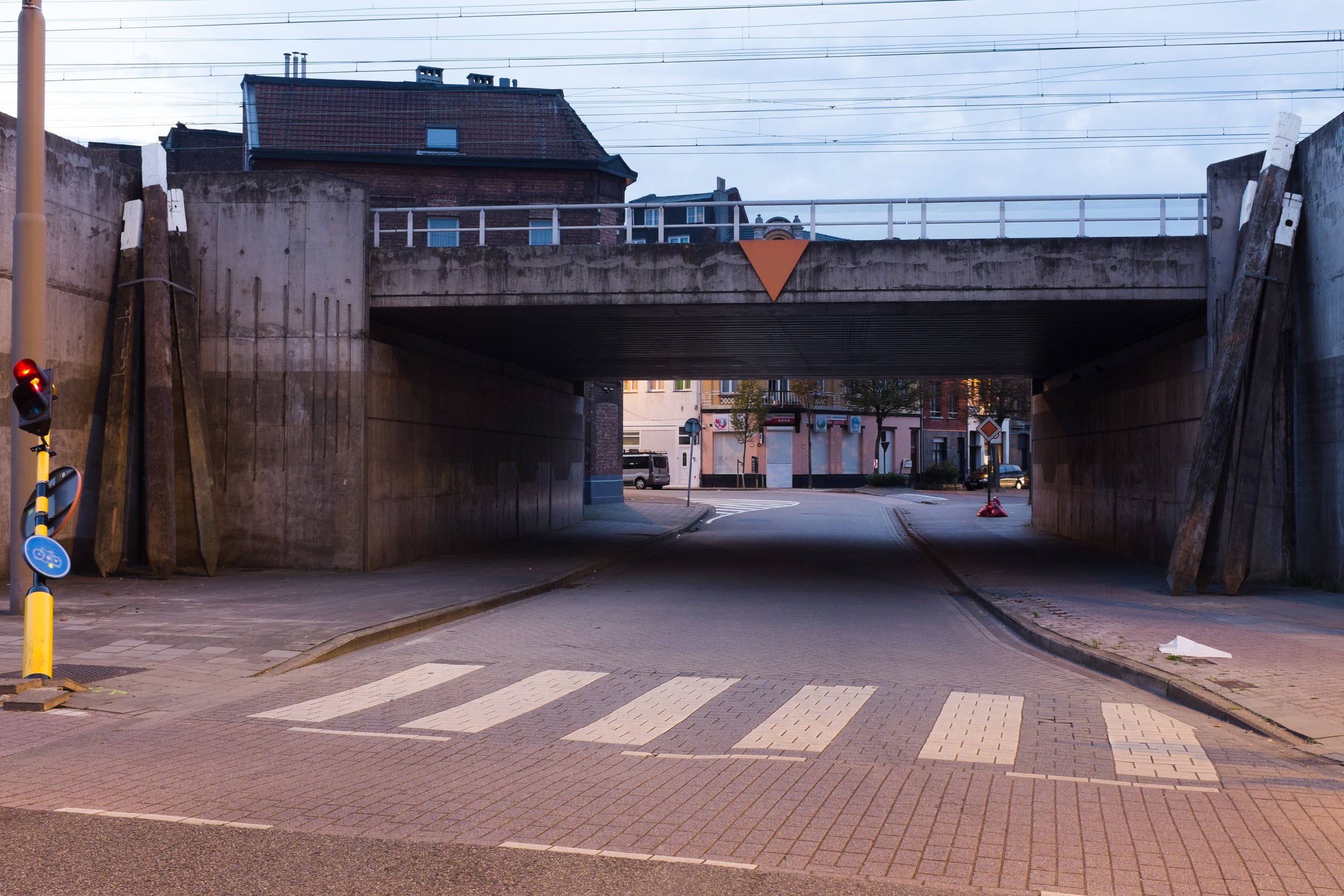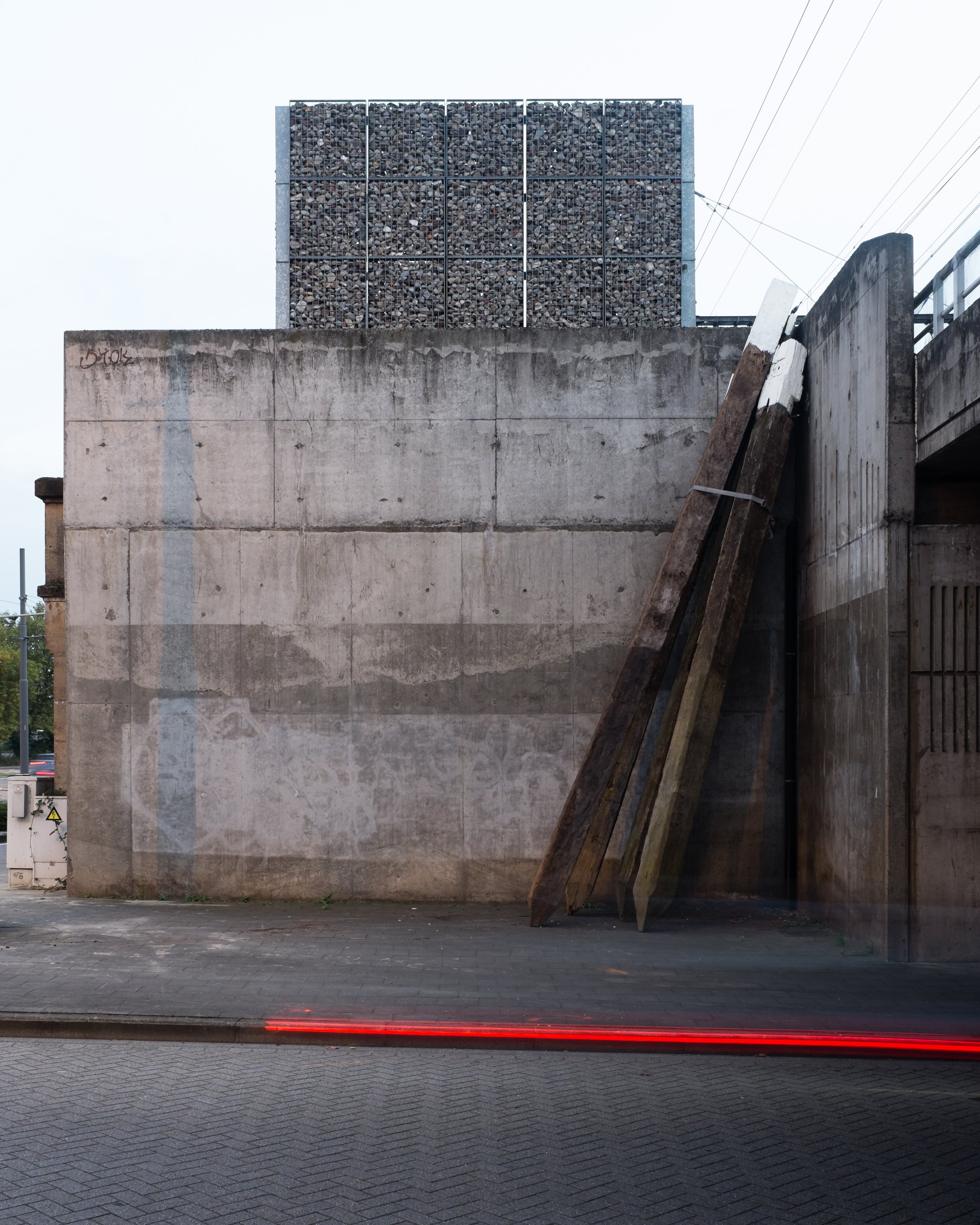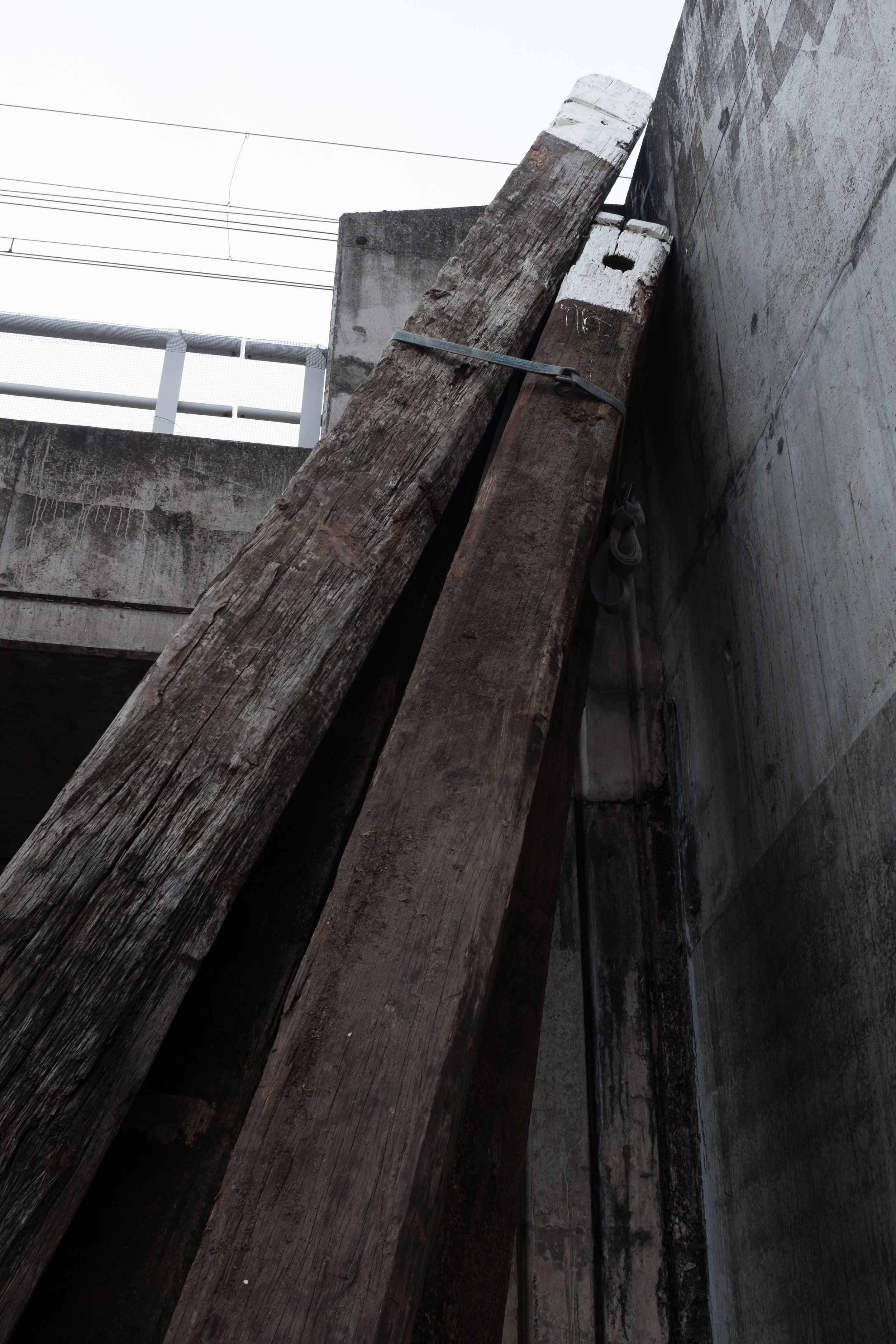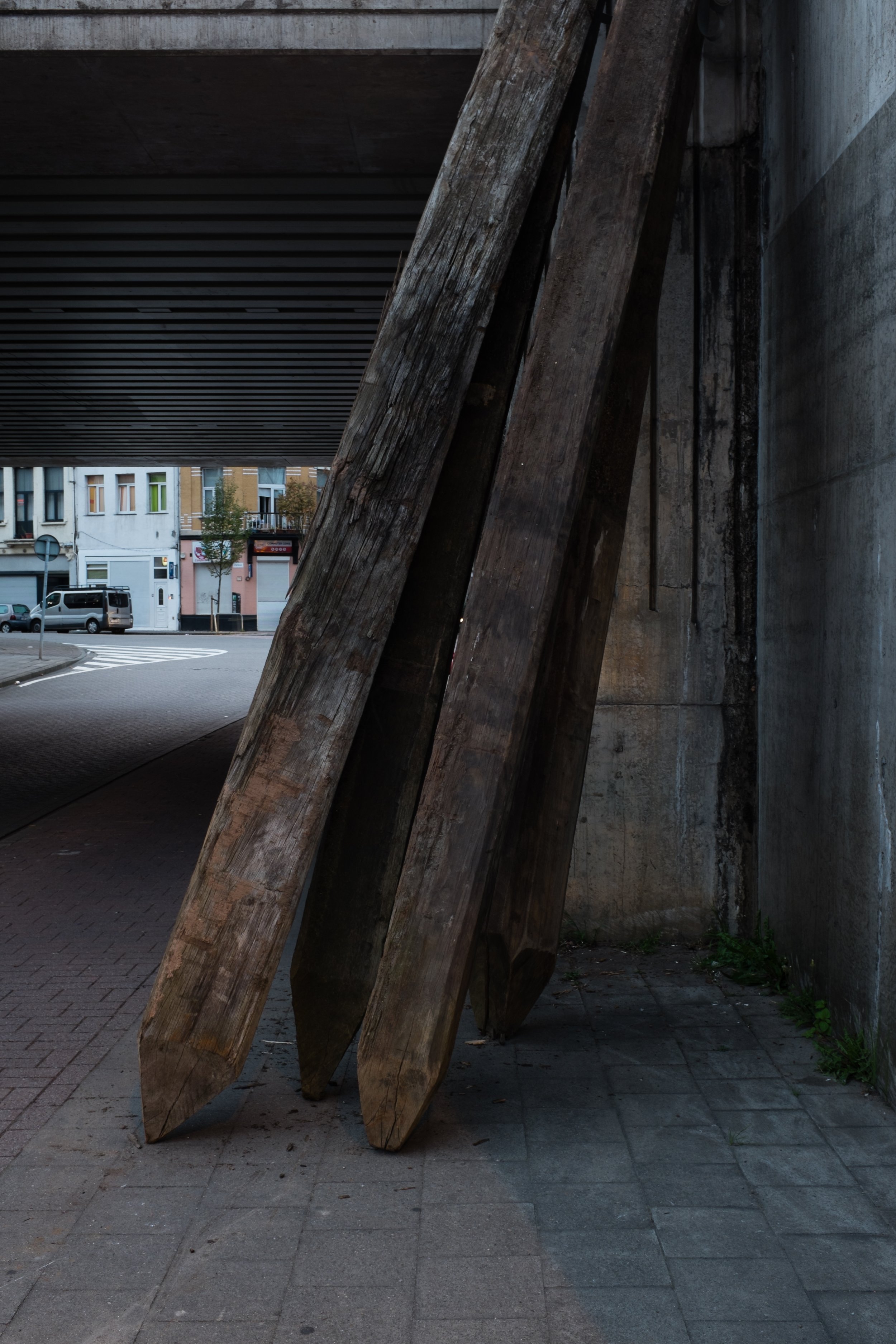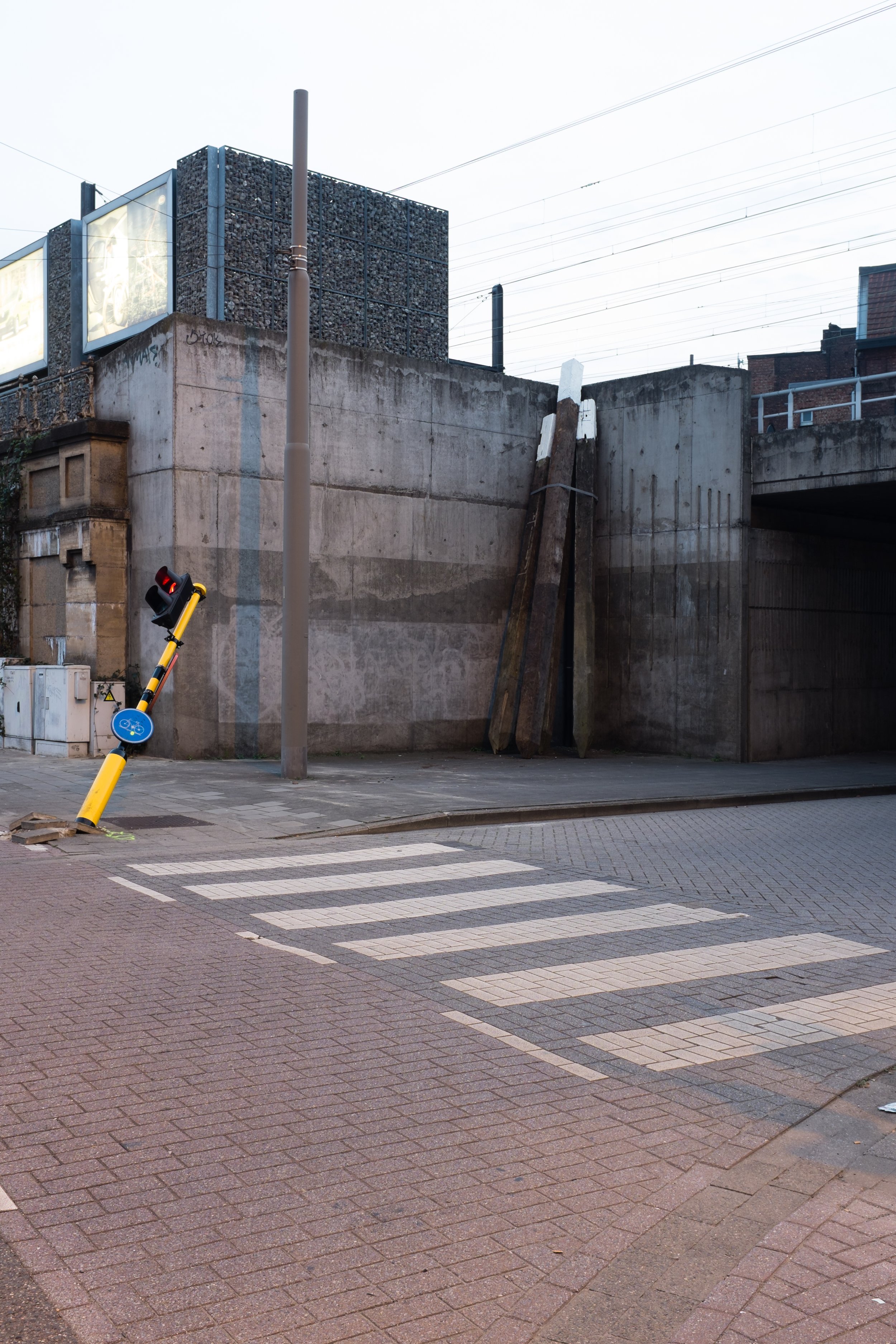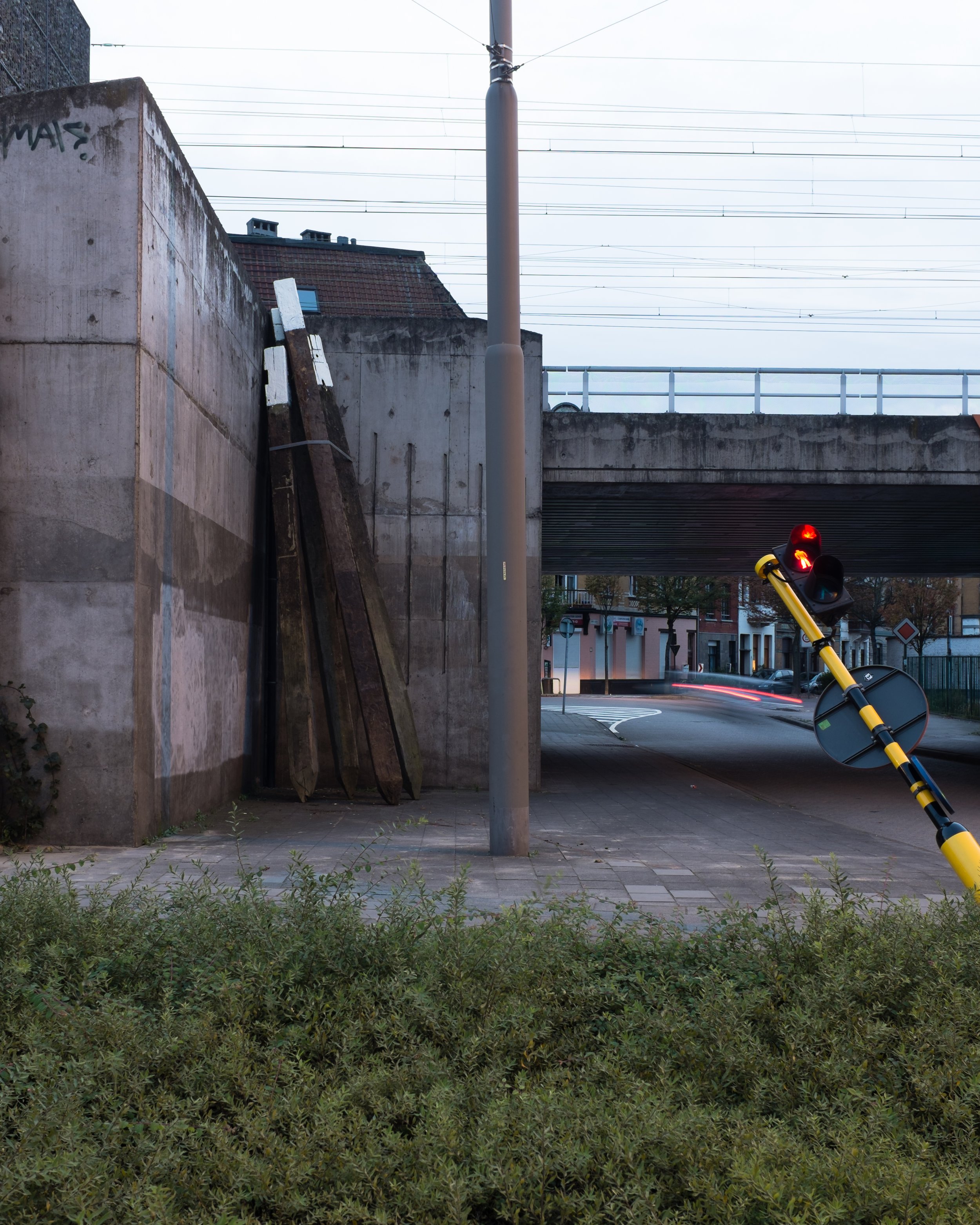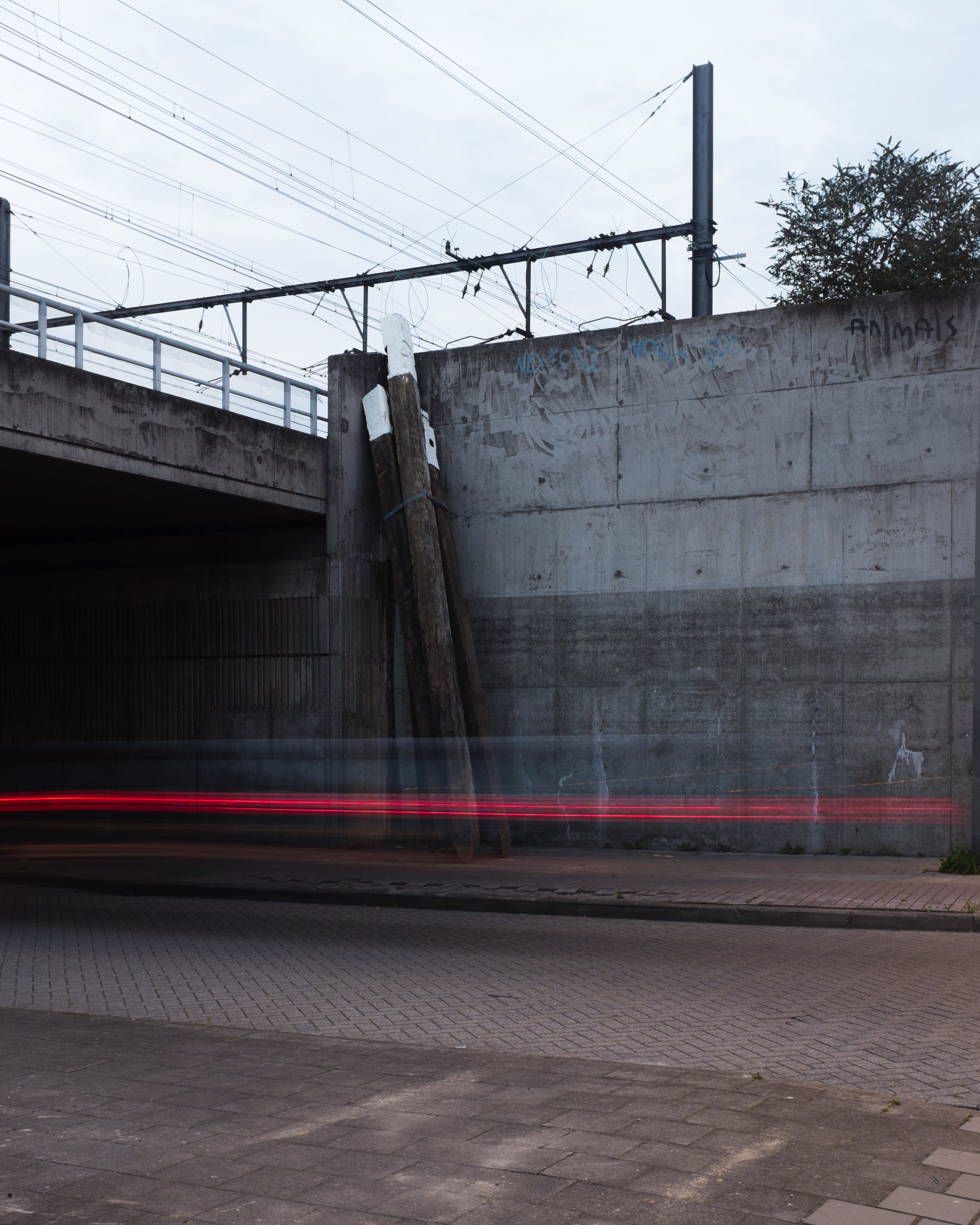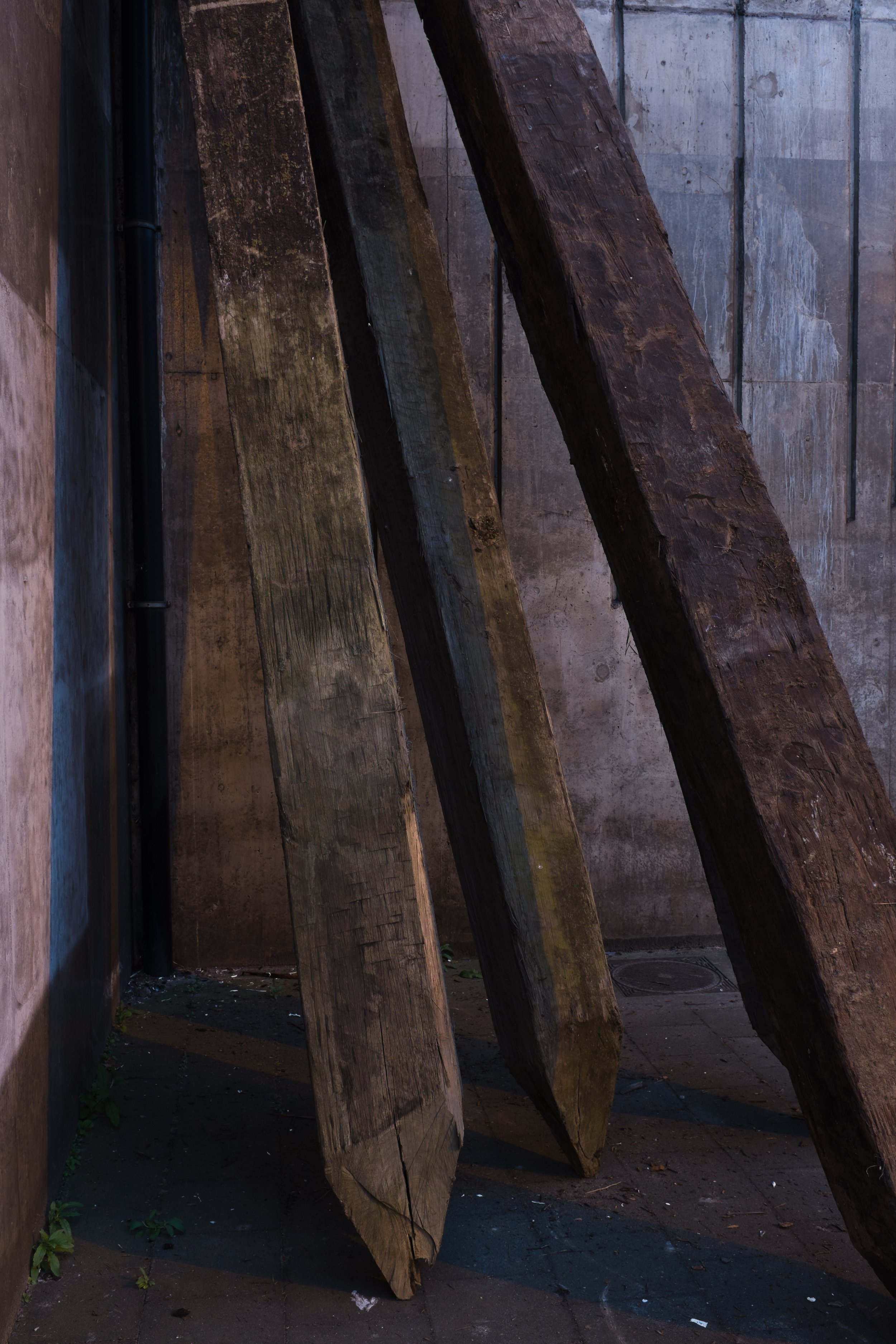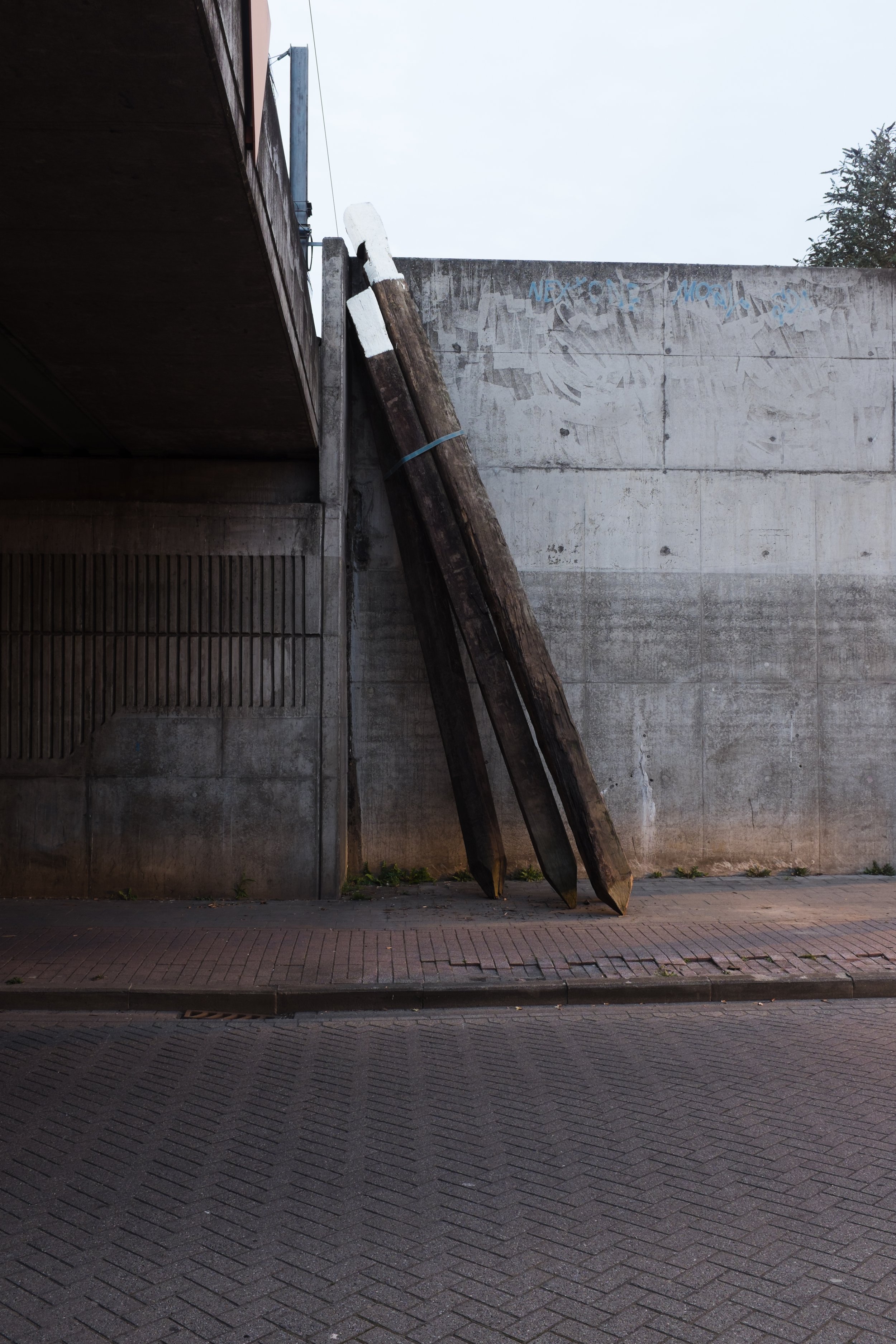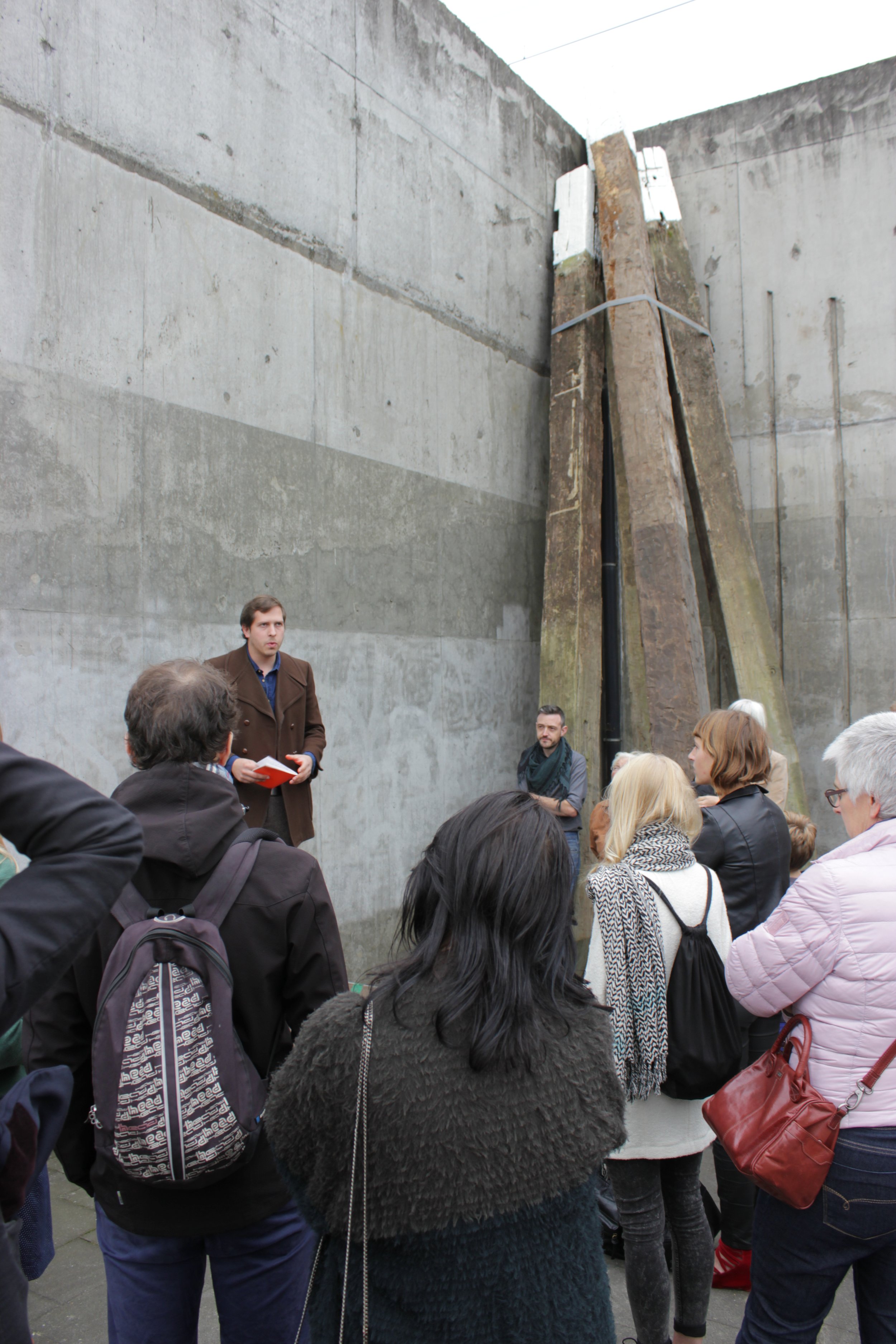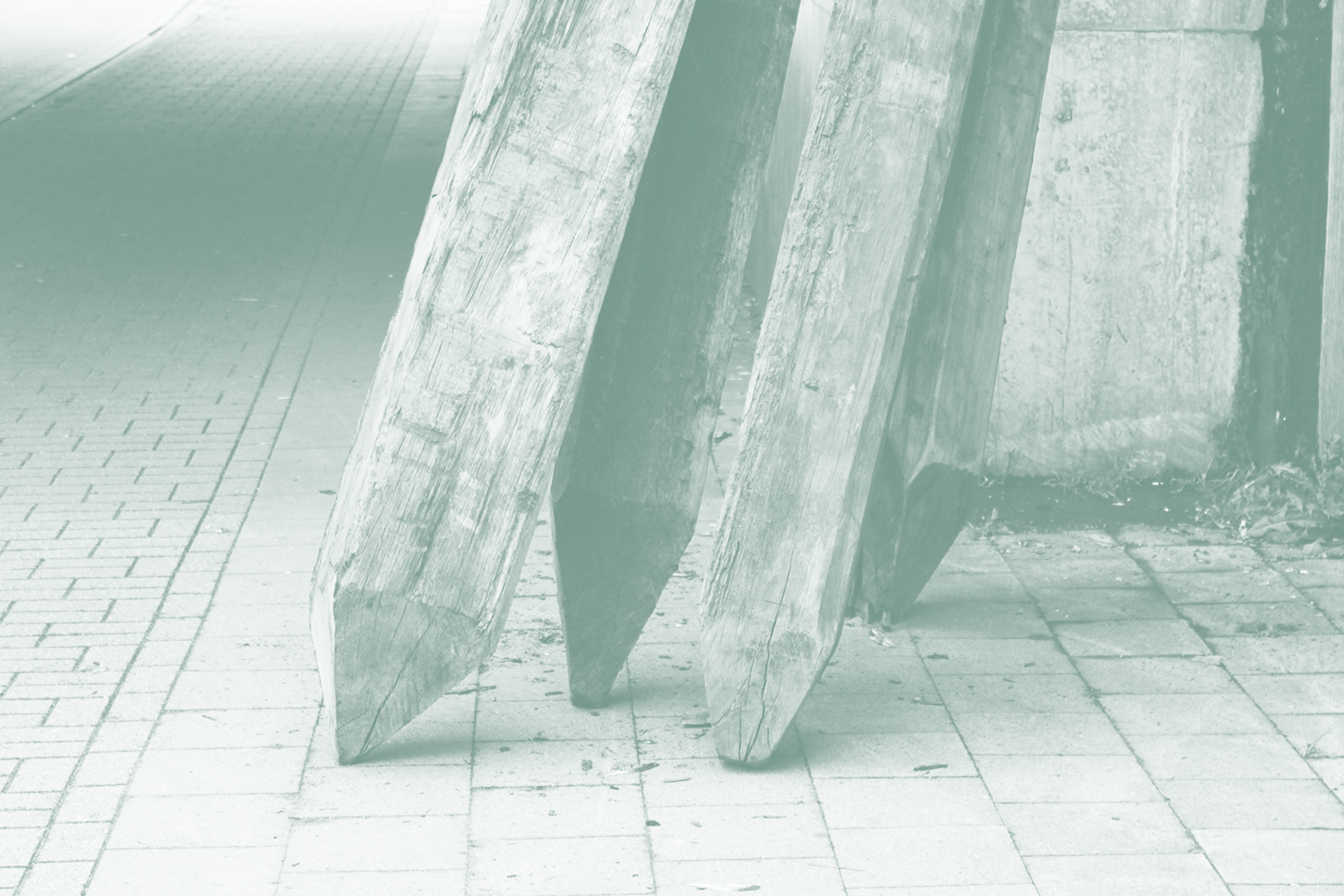
Je ne suis qu'un Gueux
2014
The project was initiated by and in collaboration with Lokaal 01, in Antwerp. However, it was not realized as a permanent installation but was only shown temporarily during the BORG 2014 festival.
This proposal suggested installing two wooden mooring piles on both sides of the railway bridge over Karel Geertsstraat (Turnhoutsebaan) on the Noordersingel side. Each mooring pile consists of four interconnected poles, approximately seven meters high. The top of each pole is painted white, while the rest is untreated azobé wood.
Upon entering Antwerp via the E313/E34 motorway, one encounters an exceptional urban landscape where the Singel and Ring R0 intertwine in a maze. A vast open asphalt field marks the city's boundary, with Borgerhout lying beyond. The bridge of the overhead railway unintentionally forms an atypical city gate through which all incoming traffic must pass.
The archetype of a city gate is not only relevant to Antwerp as a medieval city but also as a port city. Each lock separating the harbor from the waterway can be considered a gate that ensures the safety of ships. A harbor can also be seen as a gateway to the hinterland.
Throughout history, the city and the harbor have been inseparably linked. Waterways have been a characteristic feature of almost every medieval city. However, due to the industrialization of port activities, there is no longer room for heavy labor in the city center. Enormous shipping lanes and lock basins, surrounded by kilometers of industrial estates and transshipment terminals, now form the current port landscape. The Antwerp port has increasingly distanced itself from the city in recent decades and could, in terms of area alone, be a city in itself. Therefore, the importance of the harbor in Antwerp's history should not be forgotten.
For BORG 2014, artist Lodewijk Heylen proposed placing a maritime element in the urban context to create a link between both parts of Antwerp, the city, and the port. The chosen location supports the reference to the motorway as a modern lifeline taking over from the archaic waterway. Specifically, this involves the placement of two mooring piles.
A mooring pile is a interconnected pole structure in ports, used to moor ships, indicate the shipping lane, or guide vessels safely to a fender. Named after the infamous Duke of Alva (Duc d'Albe, 1507-1582), with his white collar and black robe, the name "mooring pile" entered the vocabulary of the water pirates in the 16th century. The role played by the iron duke in the formation of the city and the division between the Netherlands and Belgium, with the border at Antwerp, is significant. He also built a citadel in the south of the city and could plunder the surrounding region from there.
These underlying histories and rationales form the basis of the proposal to place a work in the public space of Borgerhout. The mooring piles act as markers of the existing gate and provide a visual emphasis on both medieval history, port history, and modern car culture.
